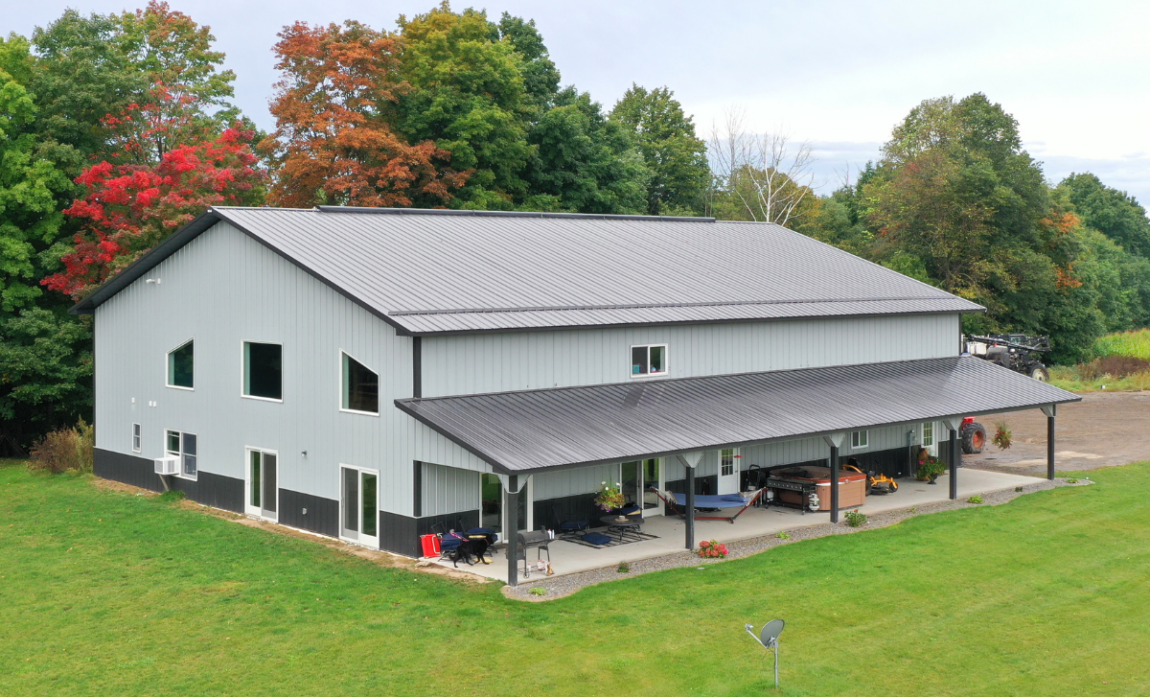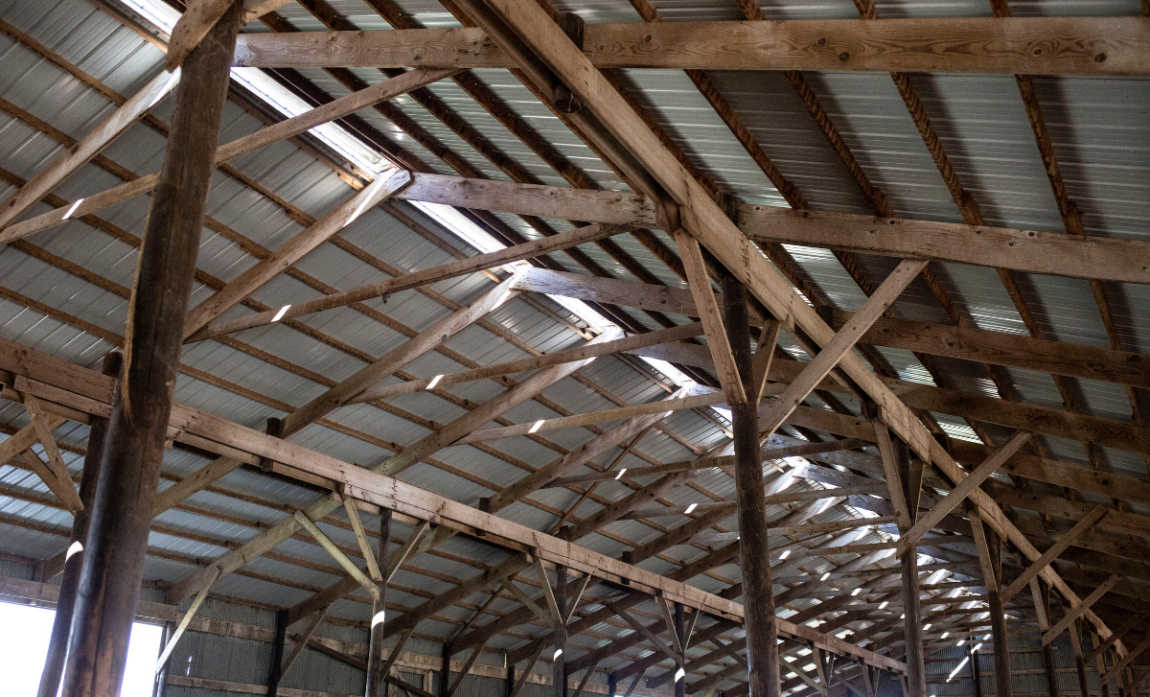If you’re thinking seriously about a new building for your horses, you’ll want to identify exactly how you plan to use it. Doing that early in the planning process is crucial to having the kind of horse facility you’ll be happy with for the long-term.
Below, we cover four key topics to consider as you think about how you’ll use your equestrian building.
We’ll do that with the help of two experienced horse facility experts, Rosemarie Markus, owner of Heartland Sales and Tim Noble, owner of Kentuckiana Building & Development.
Let’s dive in, starting with what you’re willing and able to spend.

1. Your Vision vs. Your Budget
Establishing how you’ll use your horse facility is crucial for planning a building that will both meet your needs and stay within your budget.
Tim Noble says that for some of his clients, budget isn’t really a concern. On the other hand, many others not only are limited in what they can spend; they also have little idea of what an equestrian building can cost.
That’s why he brings up the topic of a budget early on. “I’m not gauging what that can mean for me. I’m trying to help them understand what they’re getting into because a lot of people simply don’t realize what an equestrian building can cost.”
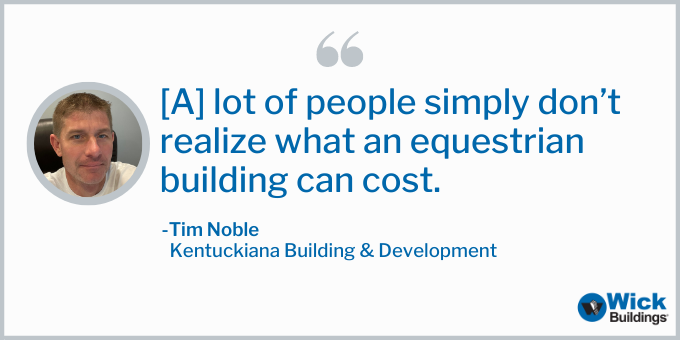
In terms of use and budget, Tim says asking realistic questions about your potential new building is critical. Here are some of the most important:
Do you need a building immediately?
Let’s say you just bought a horse for your daughter and you’re not sure how much she’s going to like it. Rather than rush into a building project, be sure you consider other options, even if they’re temporary.
For a situation like the one just described, Tim says he’s not shy about giving advice. “I have looked at people and told them, ‘You don’t need a $200,000 building right now. You’re better off spending a few hundred dollars a month to board that horse.’”
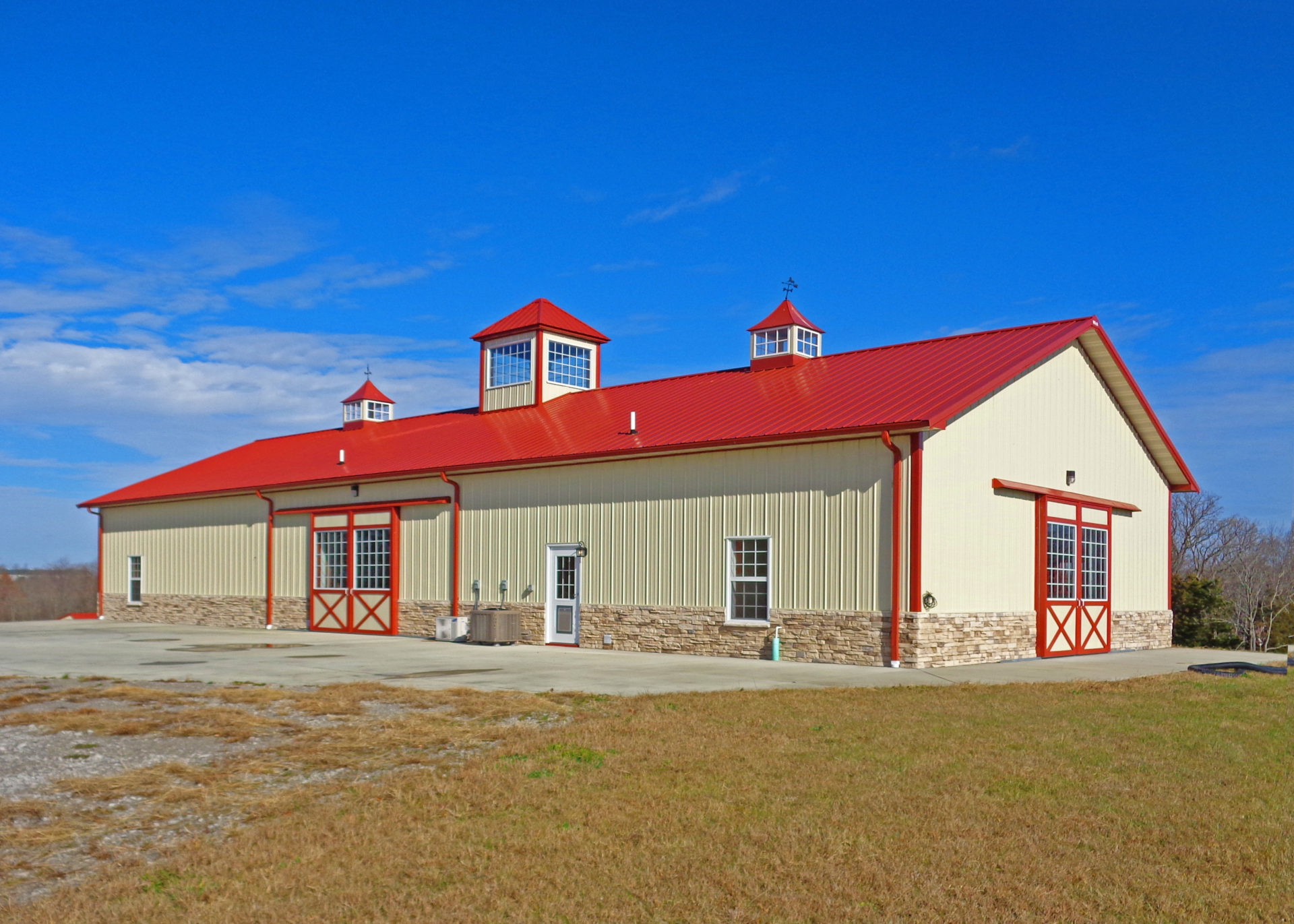
What’s the sweet spot between your dream building and your spending limit?
If you know you want a building but can’t afford the Mercedes Benz of equestrian facilities, all is not lost. Tim says you should work with your builder to find the sweet spot between your dream building and your cost constraints.
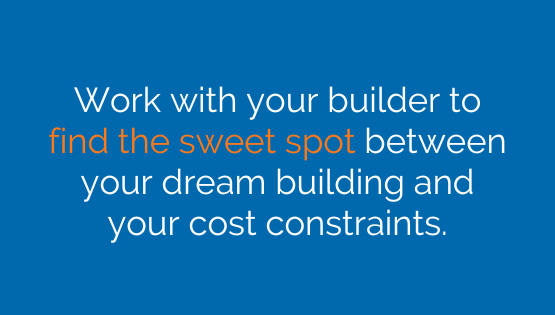
According to him, if they’re a knowledgeable builder, they should be familiar with certain design approaches and building features that will bring you down from your high-end vision and still result in a well-functioning, great-looking building that you’re more than happy with.
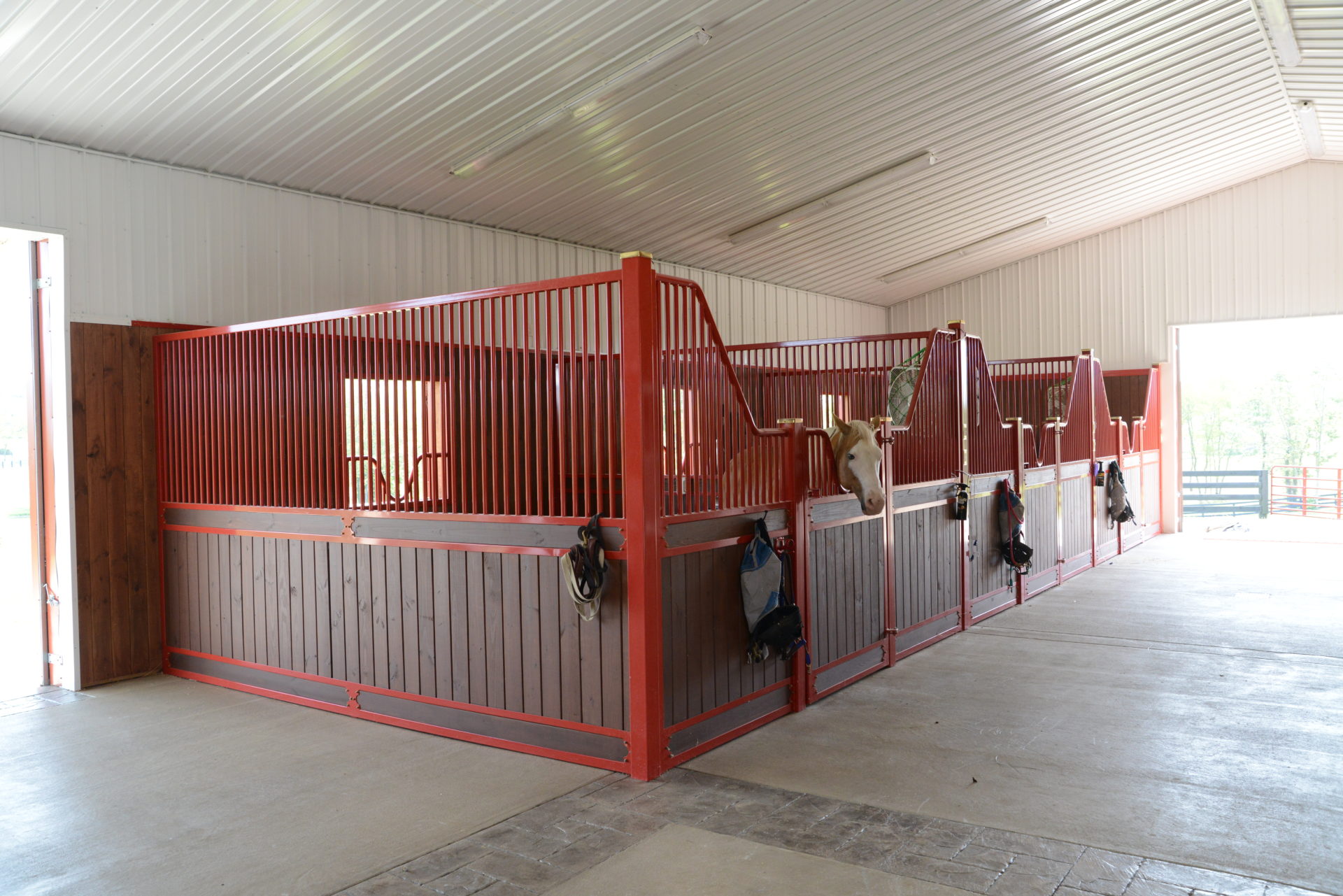
How much time will you interact with the horses and the building itself?
Tim says the majority of his clients want a building that’s easy to maintain. “A lot of times, mom and dad are working all day. They don’t have the time or desire to tend to the horses. They come home from work and just need to get their kid out to the arena for a riding lesson with the trainer.”
If that sounds similar to your situation, consider features like the following that can minimize both building maintenance and horse-related chores:
- A wash bay
- Floor matting
- An automatic watering system
- Specific types of stalls and aisles
Yes, there can be some extra costs involved, but Tim says, “When you realize that the benefits can make your life easier, it’s money well spent.”
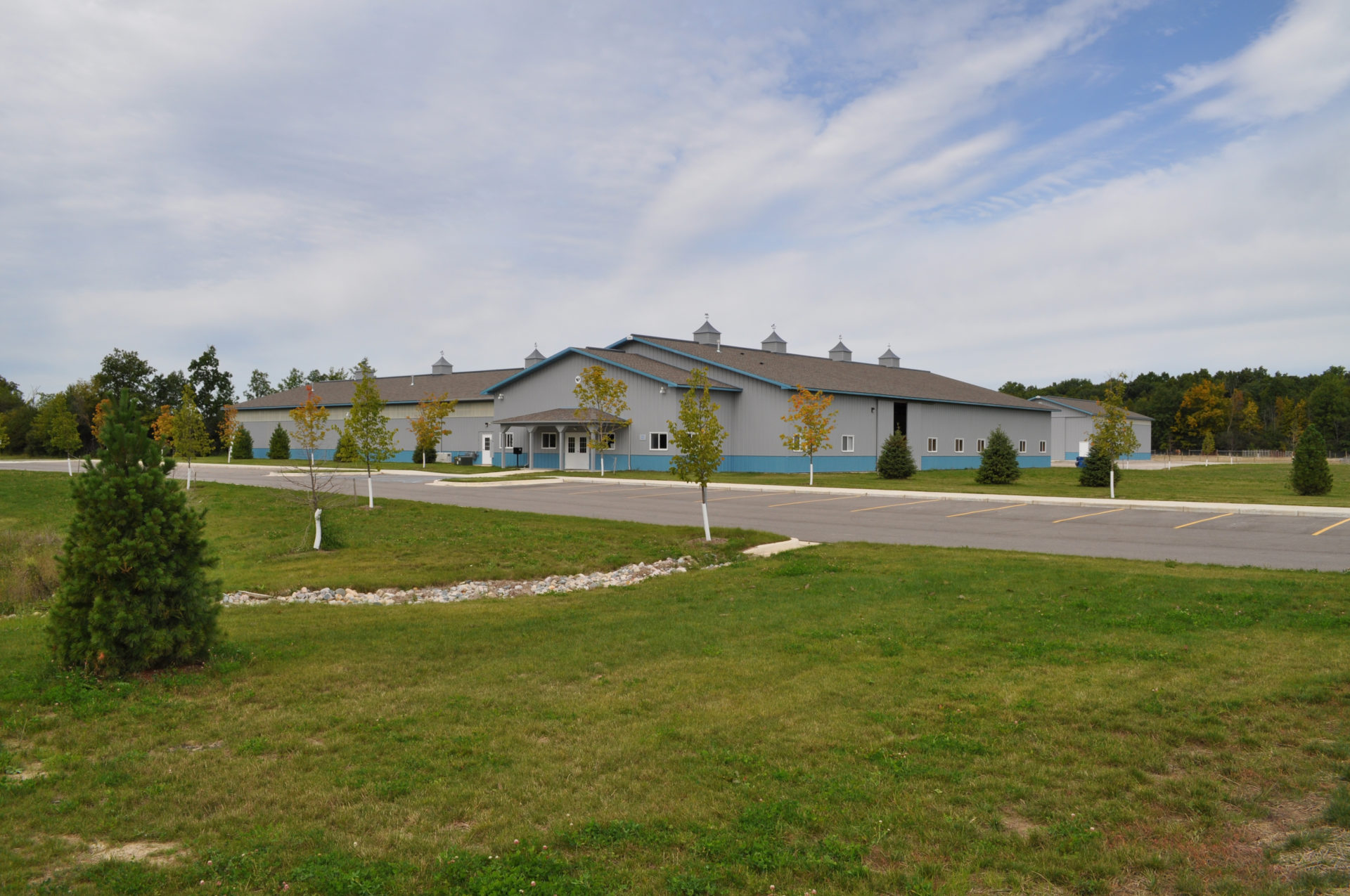
2. Rules and Regulations
Knowing how you plan to use your horse facility also means determining key factors like these:
- Will it be just for your family, or are you planning to conduct commercial training?
- How many people will be in it at any given time?
- How big do you need it to be, and where do you plan to locate it?
In turn, the answers to those and similar questions will be critical to the official side of your construction project—i.e., zoning, permitting, building ordinances, and other rules related to your property and your future building’s specific location.
You may think you have the right to build anything you want, but the simple fact is that, legally speaking, you don’t. And that goes for rural as well as suburban jurisdictions. In fact, Rosemarie Markus says, “Sometimes the small town jurisdictions can be more complicated than the bigger cities.”
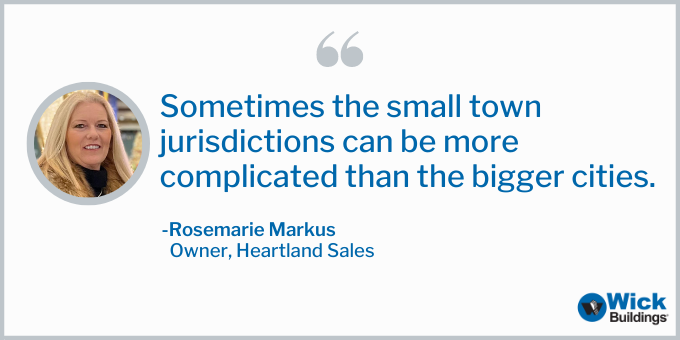
She brings up permitting and related topics in the very first conversation she has with potential clients. Be prepared for this aspect of your building project by doing the following:
Do you understand your zoning laws?
Be clear about how your property is zoned. Zoning is how local governments regulate a given property’s use. Typical zoning categories include the following:
- Residential
- Commercial
- Industrial
- Urban services
- Agricultural
- Direct control
Zoning laws may also include rules on property setbacks as well as restrictions on building size.
Jurisdictions will differ in their zoning, so it’s important to contact your local authorities and work with them to determine any zoning restrictions for your property. Also be sure to check if you’re required to obtain a building permit and see what rules apply.
Have you conducted research on building codes and local ordinances?
Building codes specify the physical characteristics of a structure. They primarily pertain to making sure it’s safe and accessible, and does not adversely affect nearby structures or residents.
Typically it’s up to your engineer, architect, and/or builder to make sure all aspects of the project meet code requirements. But you can empower yourself by contacting your local building inspector and discussing your potential building.
While you’re doing that, you can check to see if your plans violate any building ordinances. Rely on ordinance experts to make sure your building complies, or if it can possibly qualify for an exception. Then be sure to get written approval before construction begins.
Have you taken into account homeowner association agreements and neighborhood covenants?
As subdivisions and planned communities become more common, so too do things like homeowner associations and neighborhood covenants.
If this applies to you, make sure you have a written agreement from all relevant parties that they’ve signed off on your plans to construct a horse facility.
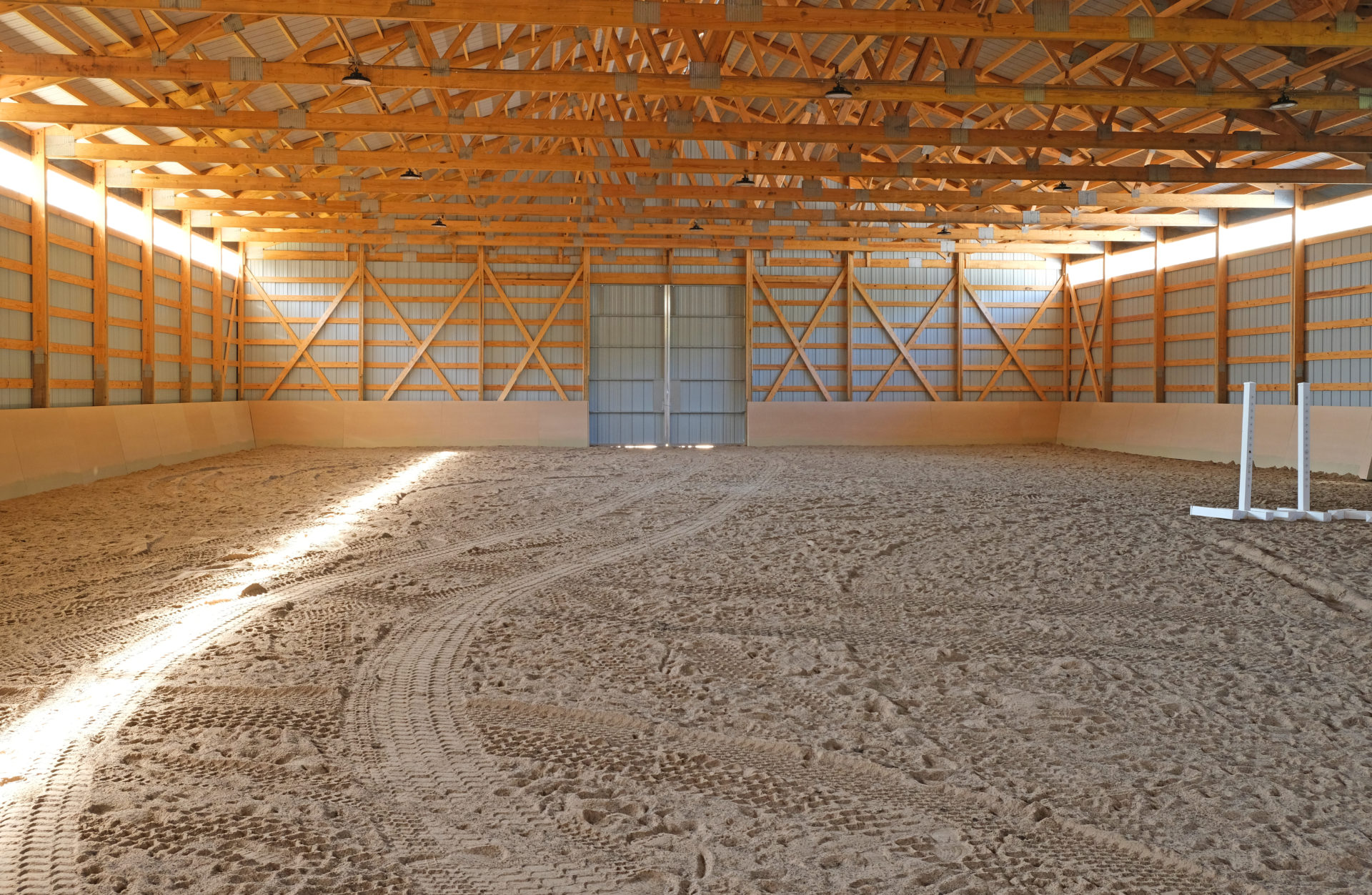
3. Riding Needs
Though there are certainly exceptions, having horses typically means riding them. And if you plan to use your horse facility for riding, then you may want an indoor riding arena.
Just be aware that indoor arenas aren’t for everyone. Let’s take a look at some important considerations.
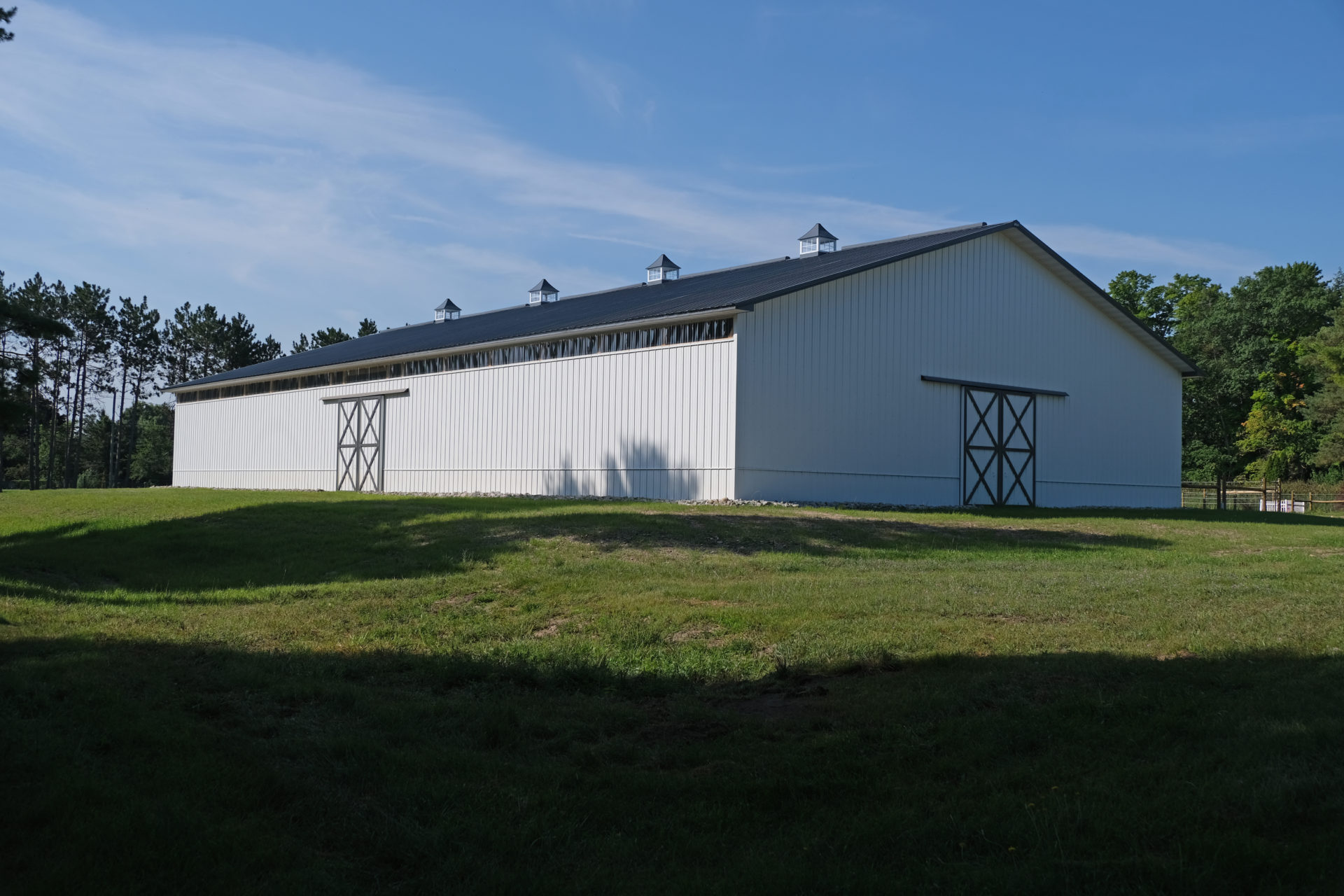
How do you know if it makes sense to build an arena?
Do your horses and your riding style require an indoor arena? According to Rosemarie, if you practice or hope to practice a horse discipline such as barrel racing, you probably don’t need an indoor arena.
“Speed people such as barrel racers typically use horses that are bred to be hotter blooded and a little more hyper. They want to have their horses outside as much as possible, so an arena just isn’t necessary,” she says.
Rosemarie says the scenario above is perfect for having just a stall barn, especially when you still want substantial shelter available for your horses during bad weather.
“You may not use it a lot for speed horses, but your stall barn can be there when you need it,” she says. In addition, it can be a convenient area to brush your horses and have a tack room for storing saddles, bridles, and other items you want to keep out of the elements.
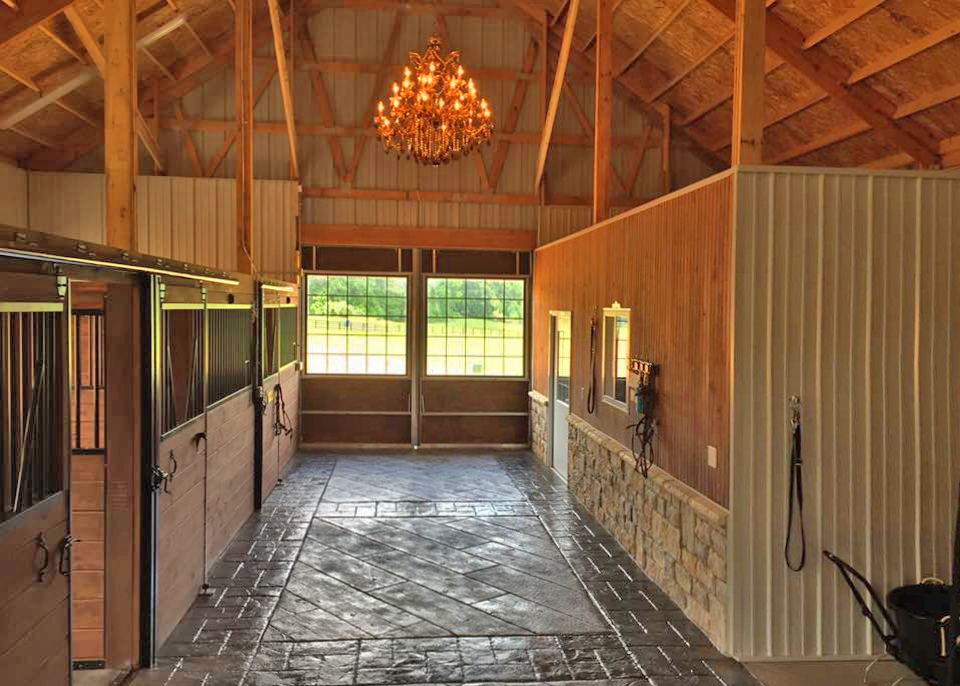
Where do you want to focus your spending?
If you plan to ride your horses just for fun, say, on trails around your property, you may not want to make the kind of investment that an arena demands.
“An indoor arena is never going to be cheap. Even those on the smaller side are still going to cost a significant amount,” says Rosemarie.
Sure, they’re nice to have. “Typically, if people can afford an arena, they’ll build one,” says Rosemarie.
But she also says a lot of people who definitely want a horse stall barn either can’t or don’t want to spend the money for an arena. “They’d prefer to devote their money to building a better horse stall barn.”
Do you want to simulate competitive events?
Dressage, jumping, reining—these and other types of horse competitions often take place in specifically sized arenas.
If you plan to use your arena for training in a certain discipline, you’ll ideally want its size to closely match the settings in which your horse or horses will be competing.
Generally, when it comes to riding disciplines and your arena, the wider you can go the better, says Rosemarie. “Just know that your cost per square foot is going to go up much quicker with width than it is length,” she adds.
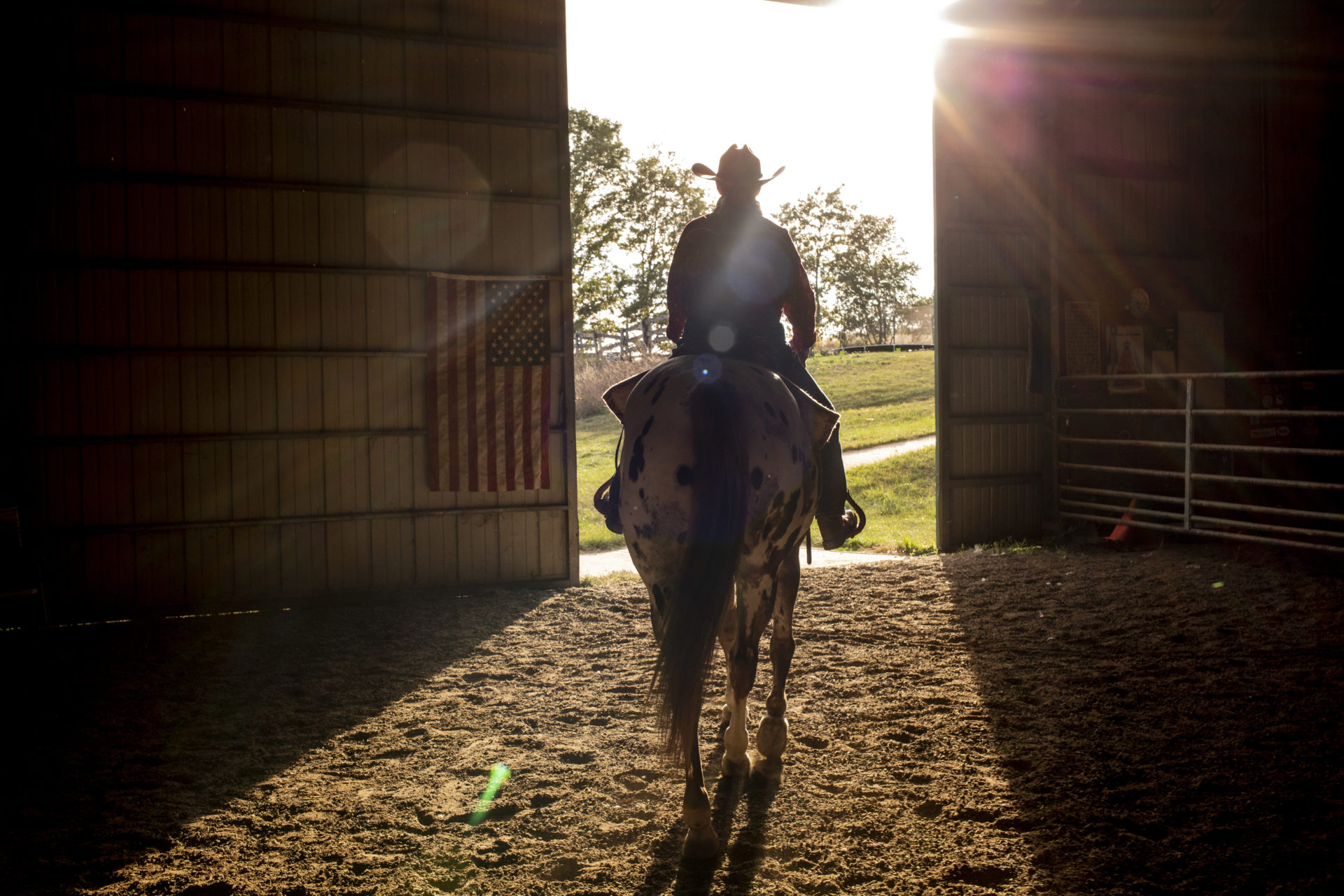
What if you just want an arena for casual, non-competitive riding?
For general riding in your arena, you have more flexibility when it comes to deciding on its size.
That said, Rosemarie does point out that a 60-foot-wide arena on a larger building will likely be your most cost-effective option per square foot.
How many horses and riders will be in the arena at one time?
No matter the type of riding being done in your arena, you also need to consider the number of horses and riders that will be in there at the same time.
If, for example, you have a situation where it’ll be four kids all riding horses at once, that should definitely factor into the arena’s size. You obviously want everyone to be able to ride comfortably—and safely.
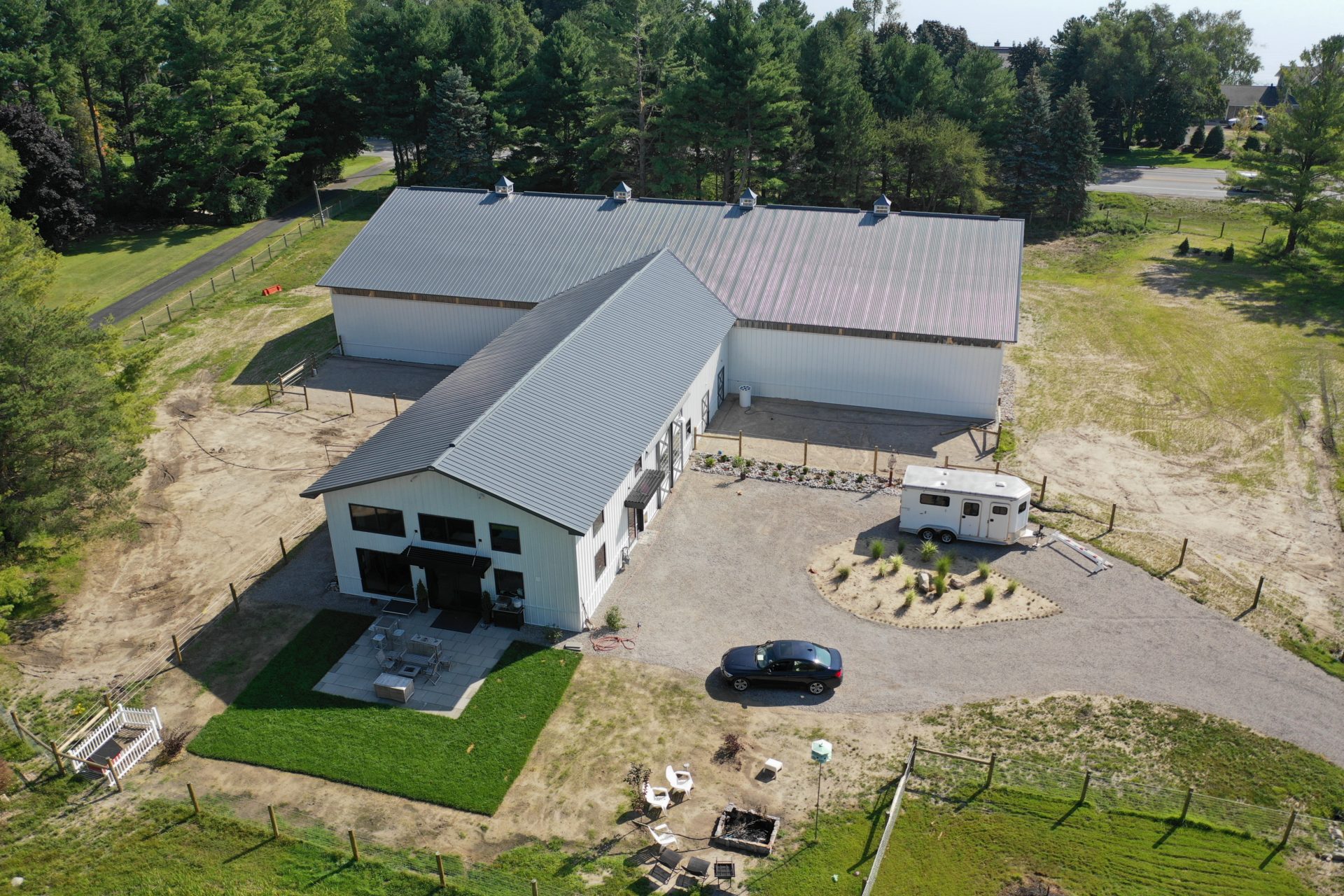
4. Uses for the Future
How you use your equestrian building will likely change over time. You may not be able to predict the future exactly, but with careful forethought, you can have a building that’s more adaptable to change.
The following questions can help:
Have you factored in the possibility of more horses?
It’s true: People with horses tend to end up with more horses. So if, for instance, you currently have four horses, you may want to build half a dozen stalls in your new horse barn.
And even if you don’t build the added stalls today, you should plan for future growth. “A lot of people think, ‘We’ll do things later,’” says Tim. “But even if you’re going to do it later, you should think it through now and design accordingly.”
ORIGINAL HORSE BARN:
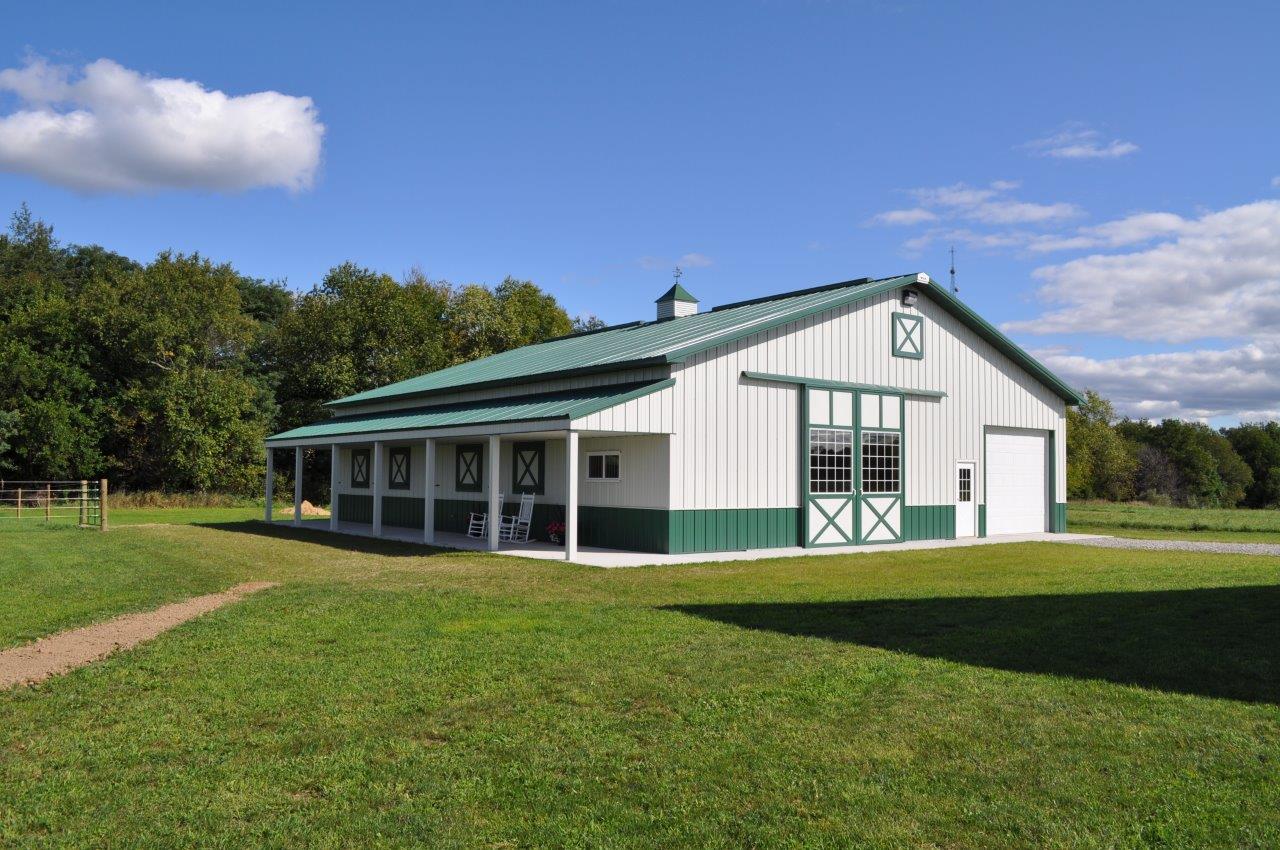
SAME HORSE BARN WITH ARENA ADDED ON LATER:

What if you want to expand your facility some day?
Along with potentially adding horses, you may also want to expand the building’s footprint. For example, if an indoor arena isn’t right for you now, could it be in the future? What if you change or add riding disciplines?
If a significant addition like an arena is at all a possibility, be sure to situate your building so that you have that option when the time comes. (See images above.)
Do you have plans to remodel your interior?
If you have an area in your horse stall barn that you think might become a bathroom or a living area, for example, make sure to let your builder know now.
Rosemarie says that builders can design your building so future windows are easier to install. They can also engineer the ceiling trusses for the heavier ceiling load that comes with drywall or lumber.
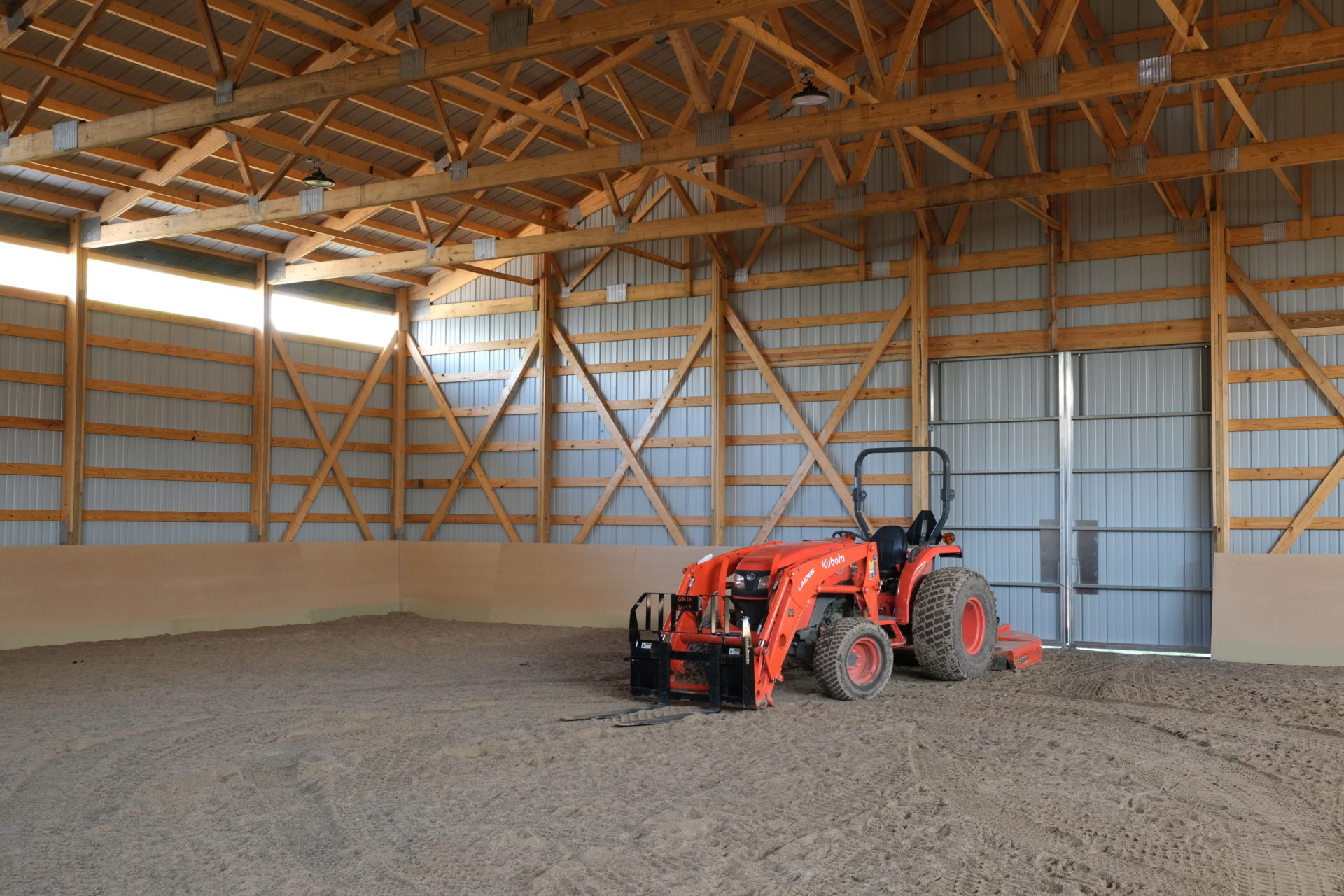
Have you thought about when you won’t have horses?
“I’ve built plenty of horse barns that eventually sit empty because the kids grow up and go off to college, and the parents don’t use it for anything,” says Rosemarie.
Thinking about the long-term future of your equestrian building can lead to smarter design decisions now.
Door openings are a perfect example. Rosemarie says that opting for larger doors to begin with is a smart move, making it much easier for other possible uses—like a rental space for farm equipment.
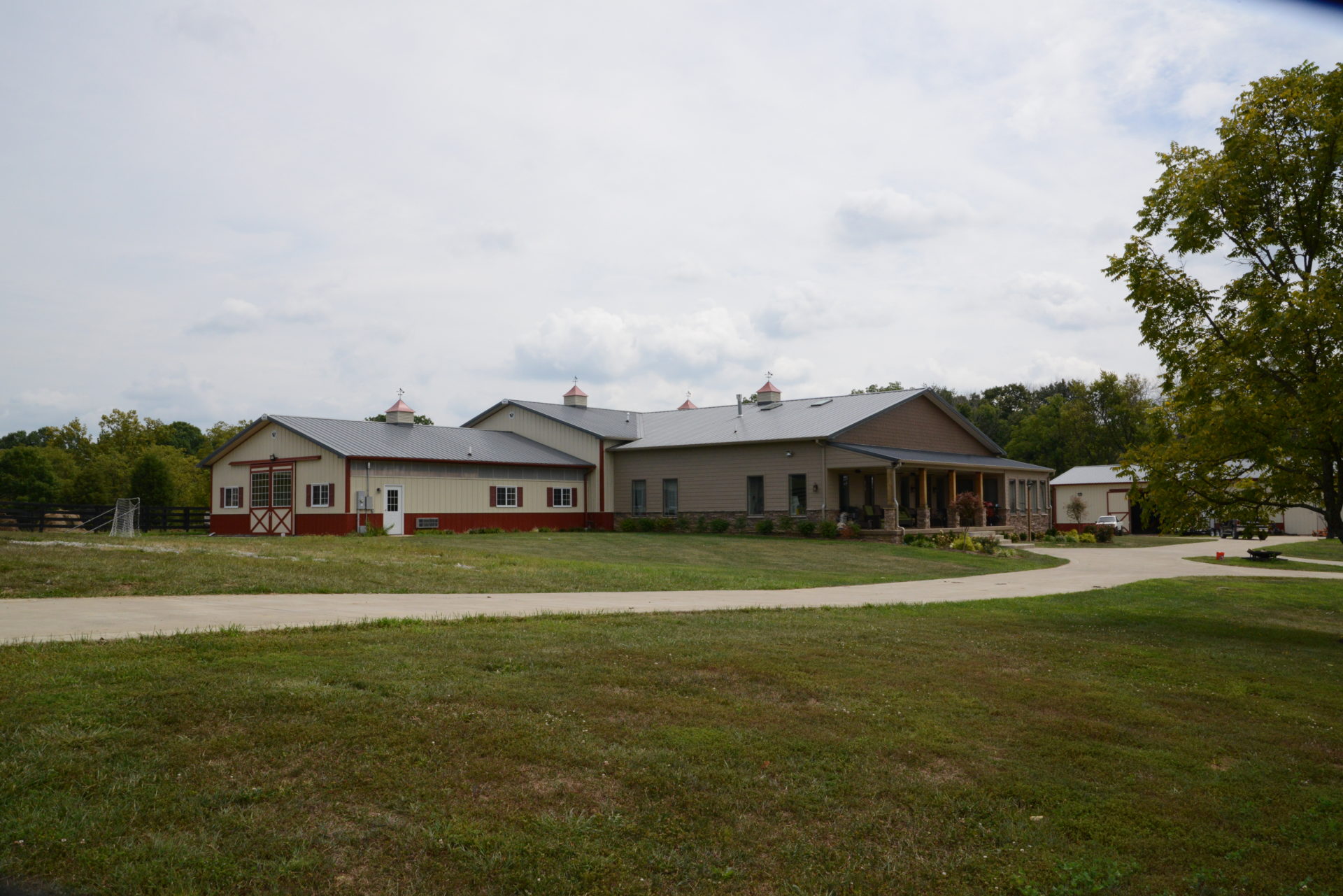
What to look for in an equestrian facility builder
If all this talk about your equestrian building’s uses has you thinking about the next step, then you should consider what to look for in a builder.
Tim says to look for someone who is reputable. More specifically, he says to make sure you ask to see their work. “The builder should be able to refer you to a customer that will gladly walk you through their horse barn, tell you about their experience, and describe how well their building functions.”
“If the builder can’t do that, then you need to walk away,” says Tim.
If you’d like to learn more about having your own equestrian facility built, be sure to contact Wick Buildings for more information.


